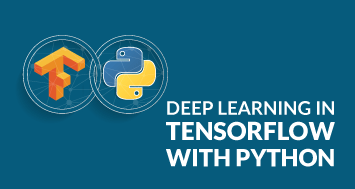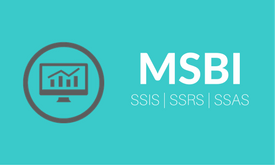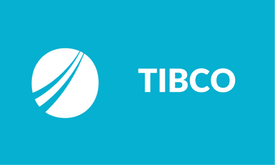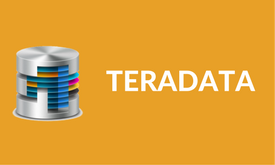Deep Learning in TensorFlow Training in Porur Chennai
Deep Learning in TensorFlow with Python Certification Training is curated by industry professionals as per the industry requirements & demands. You will master the concepts such as SoftMax function, Autoencoder Neural Networks, Restricted Boltzmann Machine (RBM) and work with libraries like Keras & TFLearn.
DThe Deep Learning is a subarea of the Machine Learning that makes use of Deep Neural Networks (with many layers) and specific novel algorithms for the pre-processing of data and regularisation of the model. Deep learning affected business applications as never happened in Machine Learning before.
About Our Trainer
- Karthik is an experienced statistician and data miner with more than 10+ years of experience using R, Python and SAS and a passion for building analytical solutions. He is a M.S. in Quantitative Economics and Applied Mathematics graduate who has analytics experience working with companies like Capital One, Walmart, ICICI Lombard etc.
Karthik is a lead Data Scientist at Citi Bank. As a Certified Predictive Modeler, Statistical Business Analyst, and Certified Advanced Programmer, Karthik is passionate about sharing his knowledge on how data science can support data-driven business decisions.
Qualification: M.S. in Statistics
Membership American Statistical Association
Want a free career Advice or any career related queries? Reach him by
+91- 8939915572
Curriculum
Deep Learning in TensorFlow Training Course Content
Deep Learning in TensorFlow training is designed to make you a Data Scientist by providing you rich hands-on training on Deep Learning in TensorFlow with Python. This course is a stepping stone in your Data Science journey using which you will get the opportunity to work on various Deep Learning projects.
- In-depth knowledge of Deep Neural Networks
- Comprehensive knowledge of various Neural Network architectures such as Convolutional Neural Network, Recurrent Neural Network, Autoencoders
- Implementation of Collaborative Filtering with RBM
- The exposure to real-life industry-based projects which will be executed using TensorFlow library
- Rigorous involvement of an SME throughout the AI & Deep Learning Training to learn industry standards and best practices
Besides strong theoretical understanding, you will be working on various real-life data projects using different neural network architectures as a part of solution strategy.
Additionally, you will receive guidance from a Deep Learning expert who is currently working in the industry on real-life projects.
- Deep Learning and TensorFlow Concepts
- Working with Convolutional Neural Network (CNN) and Recurrent Neural Network (RNN)
- Proficiency in Long short-term memory (LSTM)
- Implementing Keras, TFlearn, Autoencoders
- Implementing Restricted Boltz-mann Machine (RBM)
- Knowledge of Neural Networks & Natural Language Processing (NLP)
- Using Python with TensorFlow Libraries
- Perform Text Analytics
- Perform Text Processing
- Developers aspiring to be a 'Data Scientist'
- Analytics Managers who are leading a team of analysts
- Business Analysts who want to understand Deep Learning (ML) Techniques
- Information Architects who want to gain expertise in Predictive Analytics
- Analysts wanting to understand Data Science methodologies
However, Deep learning is not just focused on one industry or skill set, it can be used by anyone to enhance their portfolio.
- Basic programming knowledge in Python
- Concepts about Machine Learning
- Statistics and Machine learning algorithms
- Python Essentials
greens offers you complimentary self-paced courses:
Course Curriculum
-
Learning Objectives:
- Deep Learning: A revolution in Artificial Intelligence
- Limitations of Machine Learning
- What is Deep Learning?
- Advantage of Deep Learning over Machine learning
- 3 Reasons to go for Deep Learning
- Real-Life use cases of Deep Learning
- Review of Machine Learning: Regression, Classification, Clustering, Reinforcement Learning, Underfitting and Overfitting, Optimization
- Implementing a Linear Regression model for predicting house prices from Boston dataset
- Implementing a Logistic Regression model for classifying Customers based on a Automobile purchase dataset
Hands-On
- How Deep Learning Works?
- Activation Functions
- Illustrate Perceptron
- Training a Perceptron
- Important Parameters of Perceptron
- What is TensorFlow?
- TensorFlow code-basics
- Graph Visualization
- Constants, Placeholders, Variables
- Creating a Model
- Step by Step - Use-Case Implementation
- Building a single perceptron for classification on SONAR dataset
Hands-On
-
Learning Objectives:
- Understand limitations of a Single Perceptron
- Understand Neural Networks in Detail
- Illustrate Multi-Layer Perceptron
- Backpropagation – Learning Algorithm
- Understand Backpropagation – Using Neural Network Example
- MLP Digit-Classifier using TensorFlow
- TensorBoard
- Building a multi-layered perceptron for classification of Hand-written digits
Hands-On
-
Learning Objectives:
- Why Deep Networks
- Why Deep Networks give better accuracy?
- Use-Case Implementation on SONAR dataset
- Understand How Deep Network Works?
- How Backpropagation Works?
- Illustrate Forward pass, Backward pass
- Different variants of Gradient Descent
- Types of Deep Networks
- Building a multi-layered perceptron for classification on SONAR dataset
Hands-On
-
Learning Objectives:
- Introduction to CNNs
- CNNs Application
- Architecture of a CNN
- Convolution and Pooling layers in a CNN
- Understanding and Visualizing a CNN
- Building a convolutional neural network for image classification. The model should predict the difference between 10 categories of images.
Hands-On
-
Learning Objectives:
- Introduction to RNN Model
- Application use cases of RNN
- Modelling sequences
- Training RNNs with Backpropagation
- Long Short-Term memory (LSTM)
- Recursive Neural Tensor Network Theory
- Recurrent Neural Network Model
- Building a recurrent neural network for SPAM prediction.
Hands-On
-
Learning Objectives:
- Restricted Boltzmann Machine
- Applications of RBM
- Collaborative Filtering with RBM
- Introduction to Autoencoders
- Autoencoders applications
- Understanding Autoencoders
- Building a Autoencoder model for classification of handwritten images extracted from the MNIST Dataset
Hands-On
-
Learning Objectives:
- Define Keras
- How to compose Models in Keras
- Sequential Composition
- Functional Composition
- Predefined Neural Network Layers
- What is Batch Normalization
- Saving and Loading a model with Keras
- Customizing the Training Process
- Using TensorBoard with Keras
- Use-Case Implementation with Keras
- Build a model using Keras to do sentiment analysis on twitter data reactions on GOP debate in Ohio
Hands-On
-
Learning Objectives:
- Define TFLearn
- Composing Models in TFLearn
- Sequential Composition
- Functional Composition
- Predefined Neural Network Layers
- What is Batch Normalization
- Saving and Loading a model with TFLearn
- Customizing the Training Process
- Using TensorBoard with TFLearn
- Use-Case Implementation with TFLearn
- Build a recurrent neural network using TFLearn to do image classification on hand-written digits
Hands-On
-
Learning Objectives:
- How to approach a project?
- Hands-On project implementation
- What Industry expects?
- Industry insights for the Machine Learning domain
- QA and Doubt Clearing Session






